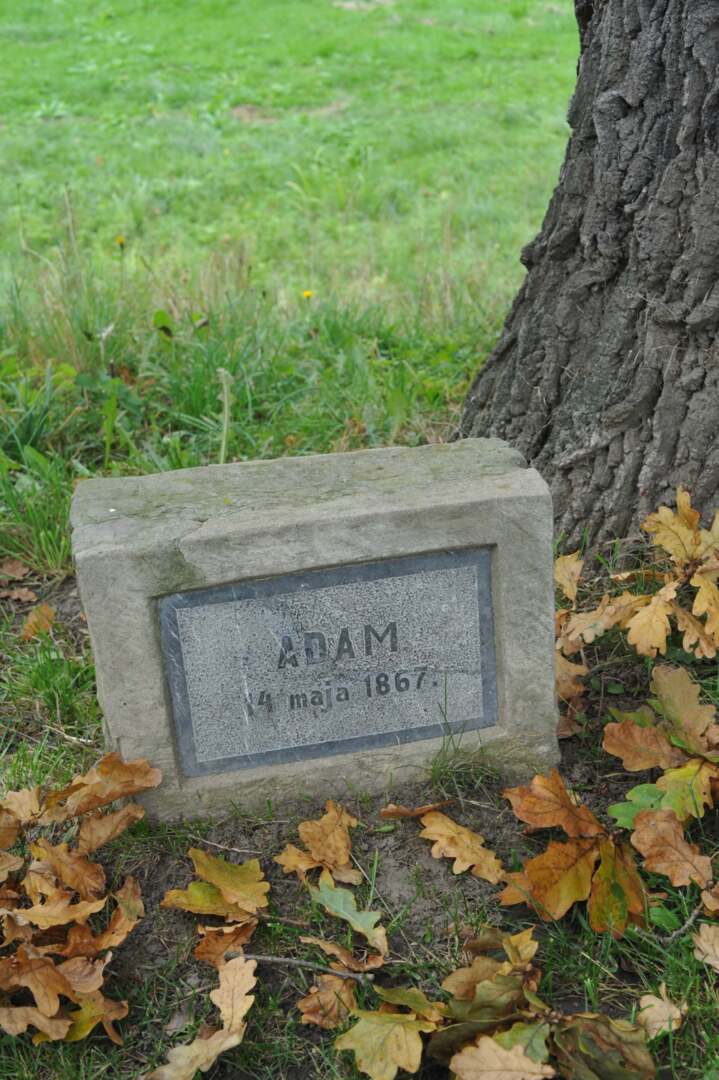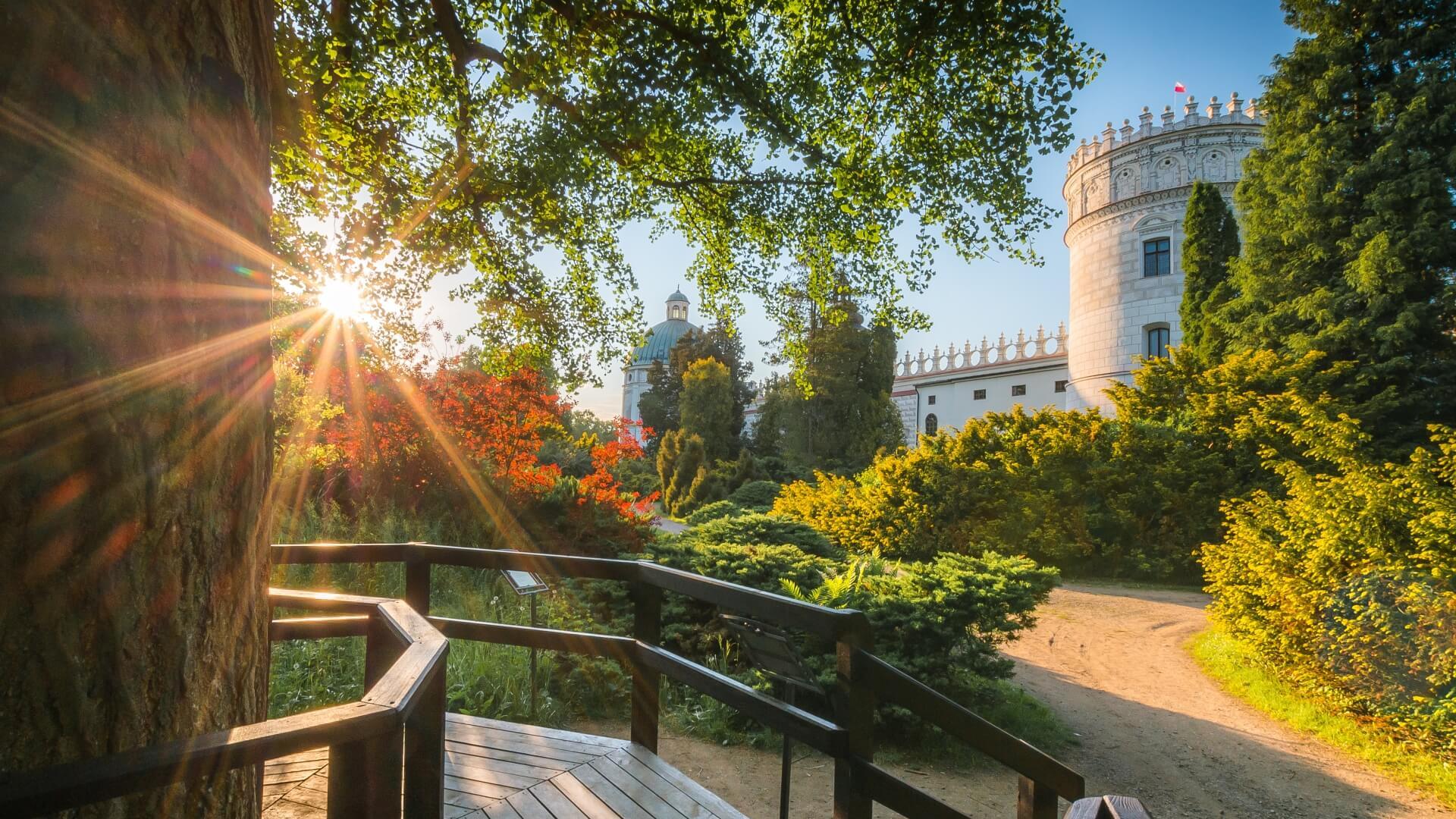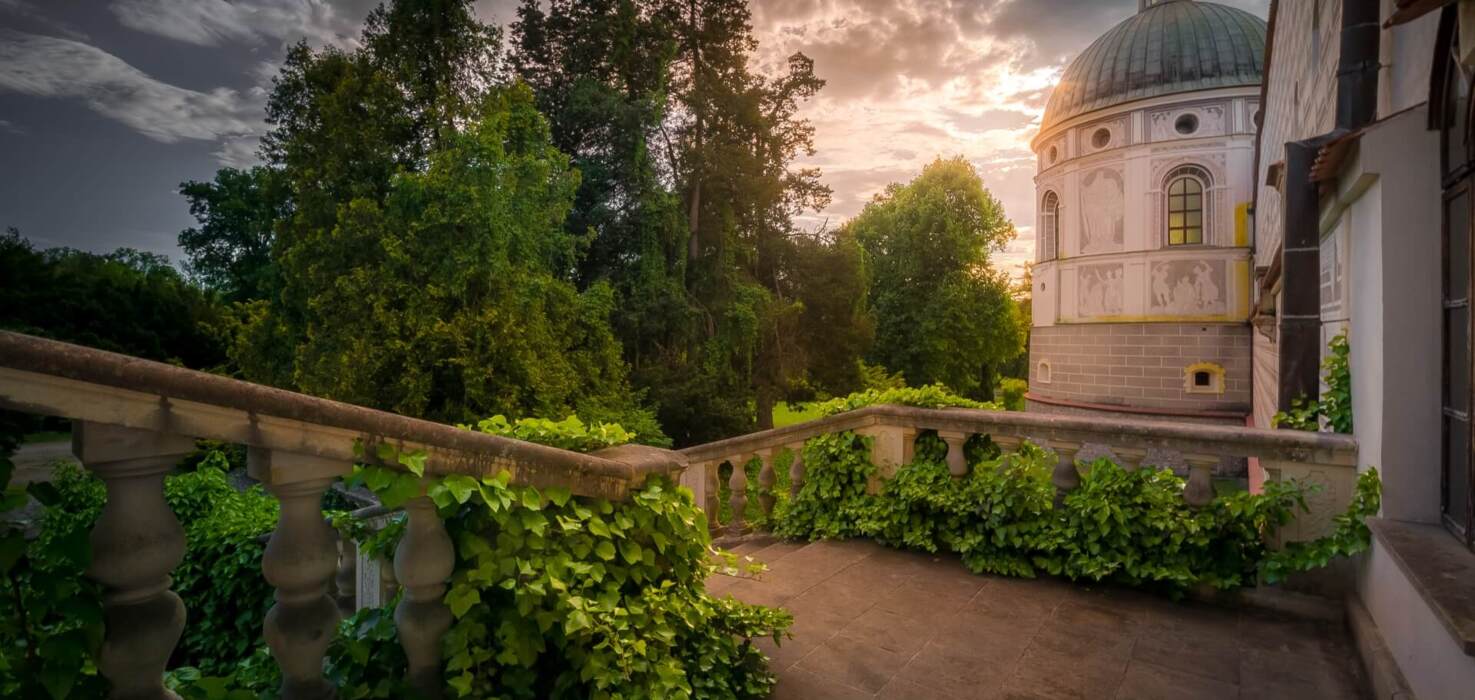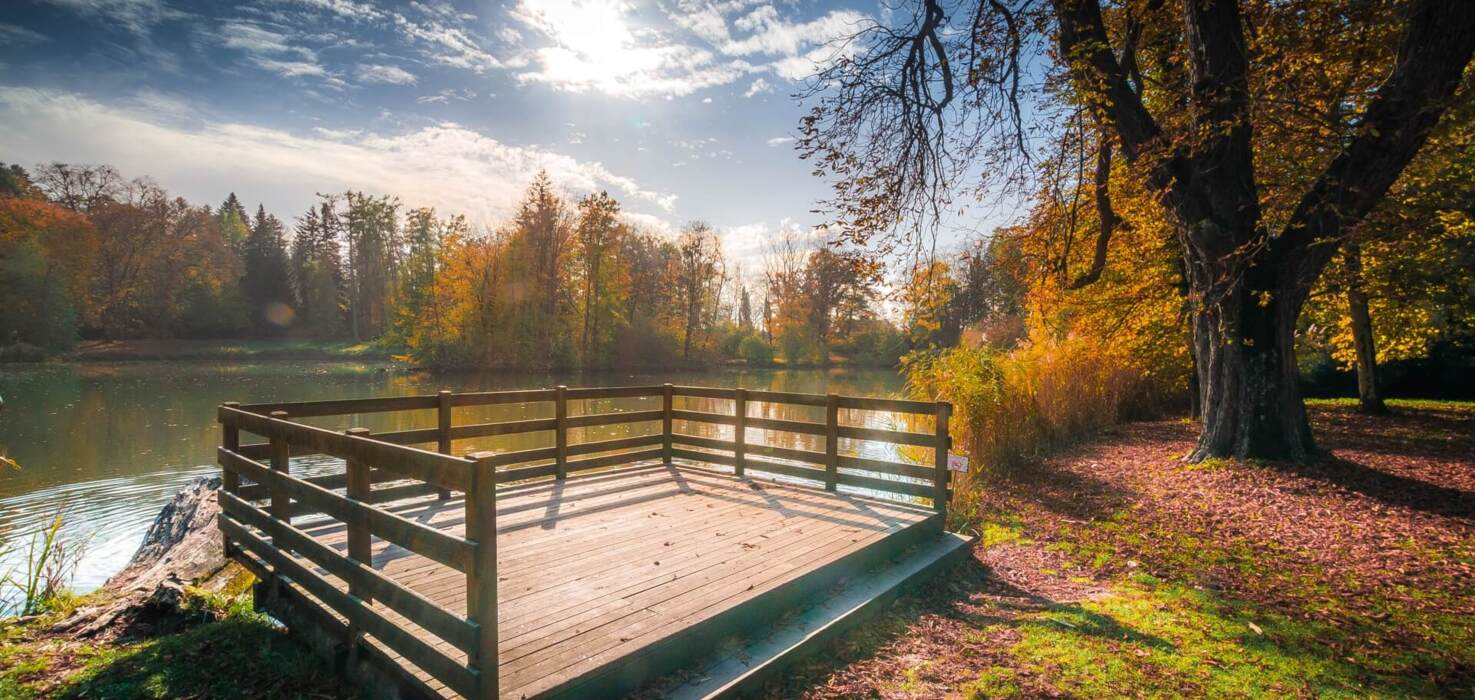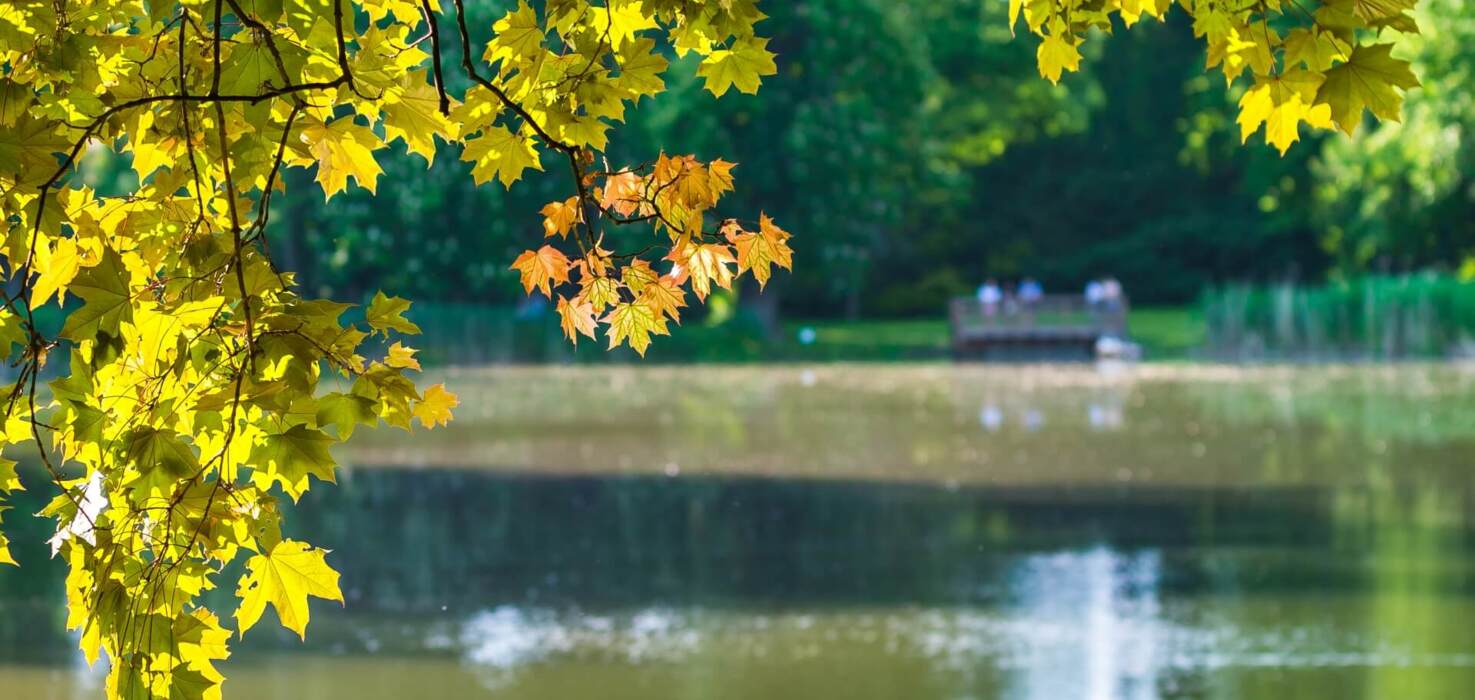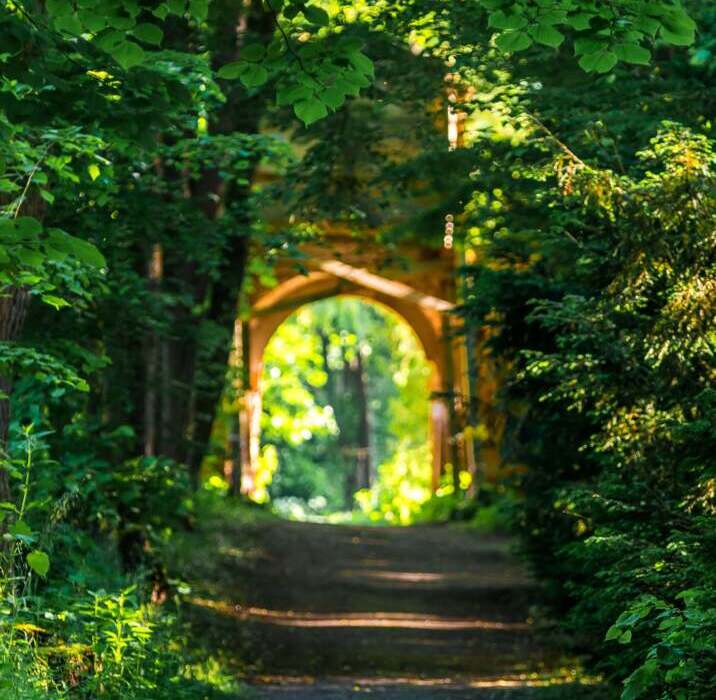Italian garden in Subcarpathia
In the times of the Krasicki family, on the eastern side of the castle, there were gardens with the character of a game park. It was a type of garden that was also a hunting ground – its distinctive feature was the use and adaptation of the natural landscape.
In a later period, geometric gardens appeared near the castle. The mention of the term ‘Italian garden’ in sources suggests that these were gardens stylistically based on symmetry and the principle of imposing human-established order on nature – geometry rules were used for this purpose. A characteristic feature of such a garden was regularly arranged compartments separated by straight paths. Straight lines dominated, which, intersecting at various angles, created various geometric patterns.
The park owes its current shape to the Sapieha princes. In their times, the park's design took on the characteristics of an English landscape garden, which began to dominate European gardens starting from the 18th century. This style breaks away from the artificiality and strictness of geometric gardens. It is based on natural beauty – however, it is nature in an idealized, most beautiful, human-friendly form. Its inherent elements are a park pond, extensive lawns, and picturesque clusters of trees. In the 19th century, gravel paths surrounded by shrubs were also introduced into English-style gardens, and trees brought from other continents as 'botanical curiosities'. The Sapiehas also planted many such exotic species in the park. In the park, one can encounter trees and shrubs from North America (e.g., eastern white pine, chestnut oak, tulip tree, pond cypress) and Asia (e.g., ginkgo biloba, pea cypress, Amur cork tree, Japanese magnolia). According to local tradition, the krasiczyn ginkgo is endowed with magical properties – circling it three times is said to ensure the fulfillment of a wished-for desire.
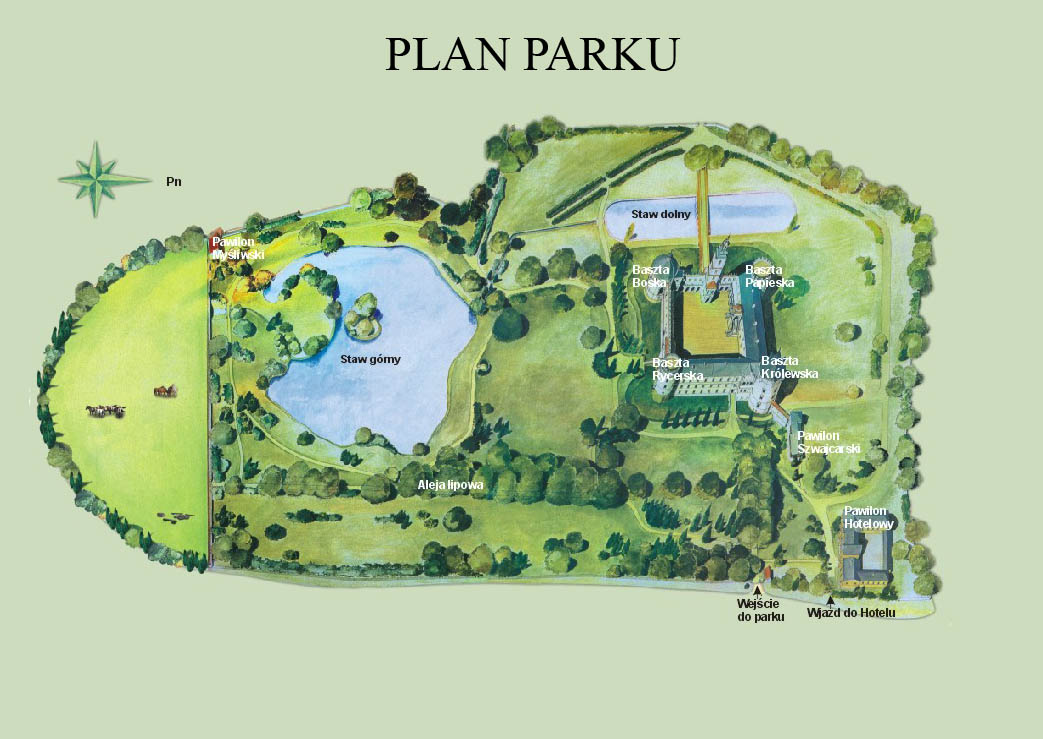
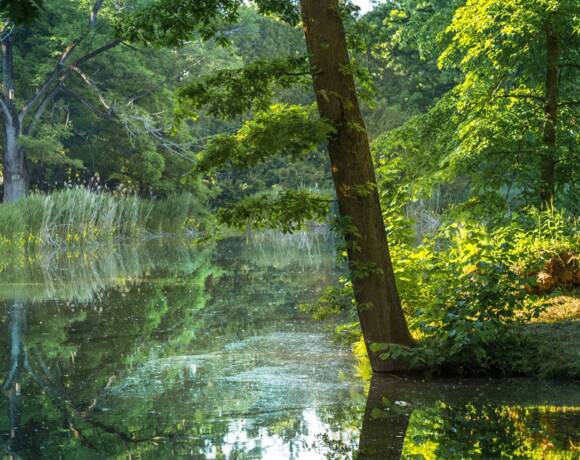
Living fossils among us
However, the park did not stop developing in later times. Some exotic species appeared in it after the war. Perhaps the most interesting example is the Chinese dawn redwood, growing near the bald cypress, to which it is externally very similar although they come from different continents and are not related at all. The Chinese dawn redwood is a living fossil – the only living representative of the dawn redwood genus. Initially, dawn redwoods were known only from fossils and the entire genus was considered extinct. Living specimens were discovered in China during the Second World War.
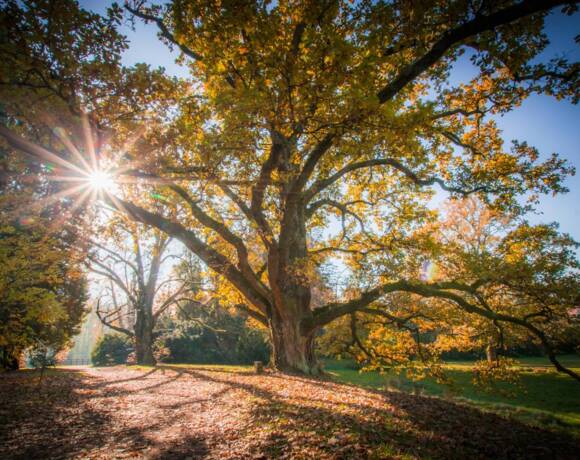
Trees with extraordinary lineage
The park also features interesting artificially cultivated varieties – for example, you can encounter spruces with unusual shapes (nest variety, inverted variety). There is also an impressively sized sycamore maple with characteristic peeling bark – a hybrid species that originated from the crossbreeding of the western plane (naturally found in North America) and the eastern plane (naturally found in Southeastern Europe and Asia Minor).
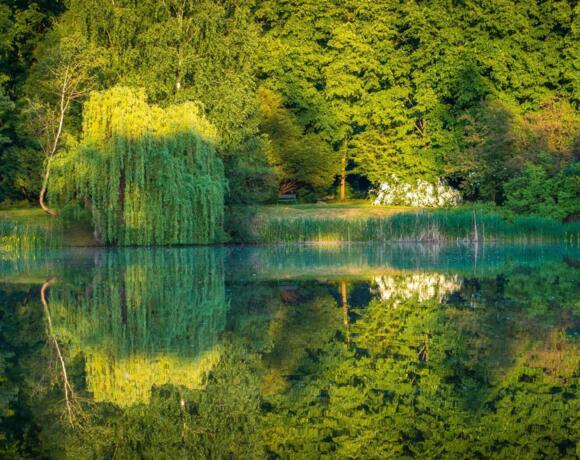
Sapieha family trees
As late as the 19th century, Prince Adam Stanisław Sapieha commemorated the birth of his children by planting trees for them in the castle park. When a girl was born, a linden tree was planted in the park – a symbol of sweetness, prosperity, and femininity. When a boy was born, an oak tree was planted – a symbol of strength and courage. This referred to ancient Slavic traditions. These ancestral trees still grow in the park today. On the stone plaques placed by them, you can read the birth dates of the children and their names – Maria, Helena, Władysław, Leon, Paweł, Jan, and Adam.
Adam Oak – by a strange twist of fate growing near the Divine Tower housing the castle chapel – is a tree dedicated to Cardinal Adam Stefan Sapieha, who was born and raised in the Krasiczyn castle. He is considered by historians to be one of the leading figures in the history of the Polish Church in the first half of the 20th century. Due to his attitude in the face of the turbulent events of that period, he is called the Unyielding Prince.
